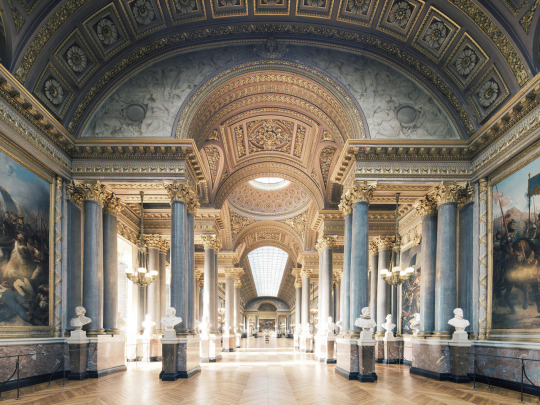Photo

Portrait of Mihrimah Sultan, the daughter of Suleiman the Magnificent and Hurrem Sultan.
184 notes
·
View notes
Photo

Queen Louise of Prussia by Vigee-Lebrun.
113 notes
·
View notes
Photo

A sinistra la mia versione, a destra una immagine dall'originale: John Sargent, Mme Pierre Gautreau, 1833. - pasticciando.tumblr
122 notes
·
View notes
Photo

Gaetano Esposito. Woman Praying, 1887.
2K notes
·
View notes
Photo

A Maiden in Contemplation, Gaston La Touche
749 notes
·
View notes
Photo

élisabeth vigée le brun (1755-1842): At seven or eight, I remember, I made a picture by lamplight of a man with a beard, which I have kept until this very day. When my father saw it he went into transports of joy, exclaiming, “You will be a painter, child, if ever there was one!”
440 notes
·
View notes
Photo

Federico De Madrazo - Gertrudis Gómez de Avellaneda, 1857 (detail)
647 notes
·
View notes
Photo

Vladimir Kazantsev: At the station. Winter morning at the Ural Railway
114 notes
·
View notes
Photo

“-a remarkable mask and breast collar for a horse, from around the 3rd-4th century B.C., from the Pazyryk culture of the Altai – a region in central Siberia” “Pazyryk is the name of an ancient people who used the stone covered burial mound or “kurgan” typical of Scythian, Sarmatian, and the Siberian Pazyryk cultures. Pazyryk is the location of a chain of 26 such kurgans covering about a half mile.”


Horse mask in form of deer antlers. Pazyryk barrow no. 1, 305-288 BCE “Beginning in the 1920s, archaeologists excavating the Pazyryk burial mounds have found the embalmed body of a tattooed man from c. 300-290 B.C., textiles, wagons, horses, bridles, saddles, and more artifacts, preserved by having been frozen. Xavier Jordana, of Spain’s Universitat Auto’noma de Barcelona, led a 2-year study of the Pazyryk burial mounds that examined the causes of death of 10 individuals. Jordana says half the sample died violently, either in battle or as sacrificial victims, and there seems to have been an effort at scalping.” http://ecoevoevoeco.blogspot.com/2012_09_01_archive.html http://ancienthistory.about.com/od/greekartarchaeology/ig/Wordless-Wednesday-Pictures/Pazyryk-Horseman-c-300-BC.htm


Bridle ornaments including “ibex horns”. Pazyryk, Altai, 1st Tuekta barrow, 430-420 BCE Scythian Pazyryk culture Some of the best examples of Iron Age tattoos belong to the Pazyryk culture, the Siberian Ice Maiden being one of the more famous ones. “The sample consists of 10 individuals, comprising seven adult males, one adult female and two children. Seven individuals exhibited a total of 14 traumatic injuries. Six of these injuries (43%) showed evidence of bone remodeling and eight injuries (57%) were morphologically compatible with a perimortem origin.”


“Twelve injuries (86%) were related to interpersonal violence, most likely caused by weapons similar to those found in Pazyryk tombs (battle-axes, daggers and arrowheads). Five individuals, including the female and one child, exhibited evidence of violent death. Furthermore, one individual also exhibited evidence of scalping. Despite the small number of Pazyryk skeletons analyzed, the pattern of traumatic injuries observed appears to be in agreement with that documented in conflicts related to raids or surprise attacks, and not a result of routinized or ritualized violence. These findings contribute new data to osteological evidence from Scythian burial sites.”


Pazyryk burials site

Drawing of section of Pazyryk Barrow no. 5. 252-238 BC Buried horses, saddles are among some of the things buried in these kurgans. “These finds were preserved when water seeped into the tombs in antiquity and froze, encasing the burial goods in ice, which remained frozen in the permafrost until the time of their excavation.”

Pazyryk Valley, Ukok Plateau, Altai Mountains
2K notes
·
View notes
Photo

Madame Sophie of France, Detail. by Jean-Marc Nattier (1748)
1K notes
·
View notes
Photo

Still Life of variegated Tulips in a Ceramic Vase, with a Wasp, a Dragonfly, a Butterfly and a Lizard, 1625, Balthasar van der Ast
770 notes
·
View notes
Photo

“A princess visiting a convent” by Vasily Surikov (1912).
805 notes
·
View notes
Photo

Greek Gold and Garnet Earrings, Eastern Greek, 4th Century BC
With the Greek expansion East, especially into the Black sea region, new cultures and art styles were experienced which had an effect on the Greek settlers, as well as the impact of Greek culture on the native peoples of these areas, such as the Scythians. With the defeat of the Persians by Alexander the Great, and the establishment of the Hellenistic kingdoms in the East, more opportunities were opened up for extensive trade routes and an influx of luxury items to the West.
The kingdom on the Eastern shores of the Black Sea, known as Colchis, was famous for its wealth in gold and legends such as the Golden Fleece grew up based on the fabulous riches of this area. Milesian Greeks settled the area in the sixth century BC and soon established themselves as wealthy trading oligarchies. Many of the gold items that were created by Greek craftsmen were exported to other Greek colonies across the Mediterranean as luxury items, but were also valued by the Scythians as prestige items. These were worn by the elite leaders of the tribes, as well as their families, as a means of displaying their wealth and power.
3K notes
·
View notes
Photo

Byzantine earring with amethyst drops, Egypt, 6th century
Hoop earrings with suspended gemstones were worn by women throughout the Byzantine Empire. This unusually fine example has woven “loop-in-loop” chains linked to small gold crosses, indicating that it was made for a Christian woman.
Walters Art Museum
263 notes
·
View notes
Photo

Artemisia Prepares to Drink the Ashes of Her Husband, Mausolus, attr. to Francesco Furini, ca. 1630
426 notes
·
View notes
Photo

Galerie des Batailles, Château de Versailles.
777K notes
·
View notes
Photo

favourite portraits (2/?) - Alexandra Feodorovna by Josef Arpád Koppay
2K notes
·
View notes